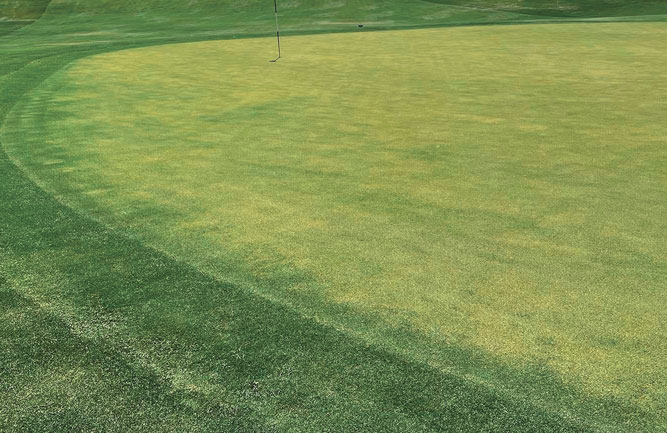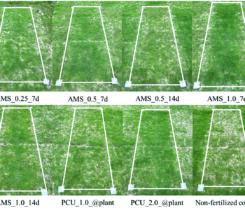Why you should fertilize for turf health, not color

A bit of fertilizer trickled into the perimeter of this bermudagrass green, showing the impact that excess nitrogen can have on color. Don’t let the greening effect tempt you into using more nitrogen than needed. (Photo: Brian Whitlark, USGA)
The overarching goal for putting green management is to optimize playing conditions while maintaining healthy turf that recovers well from traffic and ball marks. It can be easy to overdo it when it comes to nitrogen inputs because golfers enjoy the turf’s greening response. However, supplying nitrogen in excess of what produces a healthy sward will cause additional growth, leading to maintenance and playability issues.
Here are a few negative consequences of applying too much nitrogen to putting greens:
- Unnecessary growth
- Elevated organic matter and thatch levels
- Difficulty achieving desired green speed and firmness
- Increased labor required for cultural practices such as mowing, vertical mowing and sand topdressing
- Increased evaporative demand
- Increased disease susceptibility
- Higher fertilizer budget
- Less chance to optimize the quality of the playing surface
On the other hand, applying just enough nitrogen to produce healthy turf will limit undesirable growth and organic matter accumulation. This approach is more environmentally friendly, requires less labor inputs and delivers better and more consistent playing conditions. The greens may not be as green, but most players will appreciate the excellent playing conditions day in and day out.
The bottom line is don’t fertilize to enhance the green color. Supply just enough nitrogen to produce and maintain healthy turf with good recuperative ability.












